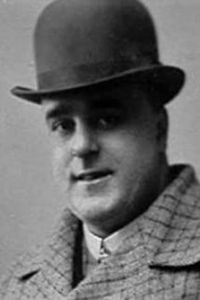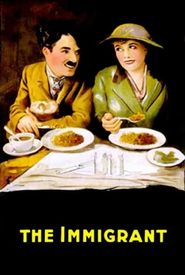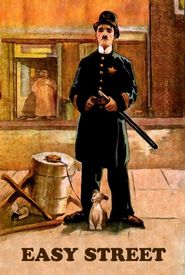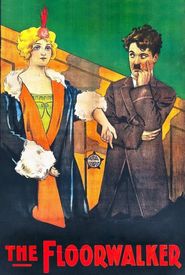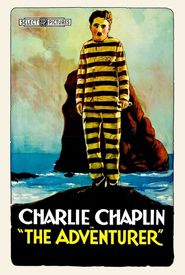Eric Campbell was born on April 26, 1880, in Sale, Cheshire, England, and began his acting career as a boy. He married fellow music hall performer Fanny Gertrude Robotham on March 30, 1901, and later joined Fred Karno's "Fun Factory" comedy troupe, where he worked alongside Charlie Chaplin and Stan Laurel.
Campbell arrived in New York with a Karno troupe in July 1914 and was soon hired by Broadway producer Charles Frohman. In late 1915, Chaplin and his brother Sid found Campbell working in a George M. Cohan play and brought him to Hollywood in March 1916.
Built like a wrestler, Campbell stood over 6' tall and weighed over 250 pounds, with a small shaved head and a menacing beard. He played the role of the villainous heavy in several of Chaplin's most famous silents, including "The Floorwalker," "The Rink," "The Pawnshop," "The Adventurer," "The Cure," "The Immigrant," "Easy Street," and "Chase Me Charlie."
By the summer of 1917, Campbell was Chaplin's favorite co-star and foil, and almost as famous as the little comedian. However, his personal life was marked by tragedy and scandal. His wife, Fanny, died suddenly of a heart attack on July 9, 1917, and his 16-year-old daughter, Una, was hit by a car and seriously injured.
Campbell married Pearl Gilman, a diminutive vaudeville comedienne, just five days after they met, but she sued him for divorce less than two months later. He moved out of their Santa Monica bungalow and into the Los Angeles Athletic Club, where he became friends with Chaplin.
On December 20, 1917, Campbell attended a Christmas party at the Vernon Country Club and drove back to L.A. in a drunken stupor. Approaching the intersection of Wilshire Blvd. and Vermont Ave. at over 60 m.p.h., he lost control of his car and was killed instantly.
After his remains were cremated, his ashes were sent to the Rosedale Cemetery, where they remained for six months while the cemetery waited for someone to pay for his funeral. When the bill remained unpaid, the urn was returned to the Handley Mortuary, where it sat unnoticed in a closet for over 20 years.
In 1952, a kindhearted office worker arranged for Campbell's remains to be finally buried, but unfortunately, he forgot to record exactly where Campbell was buried, so the burly Scotsman is lost among the markers and statues in the quiet cemetery.
